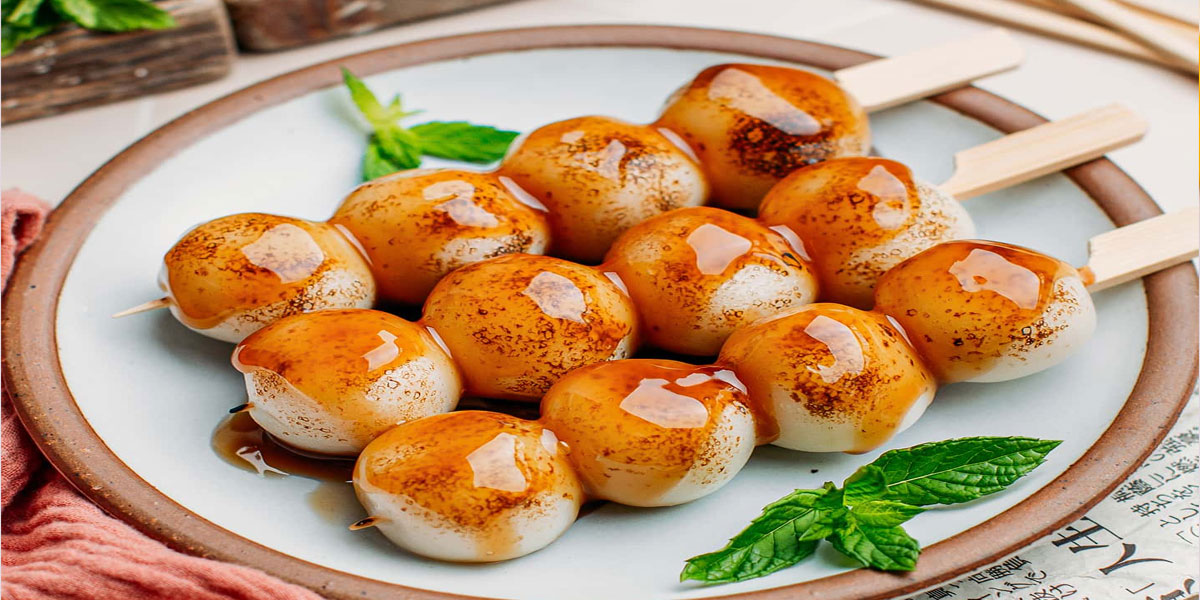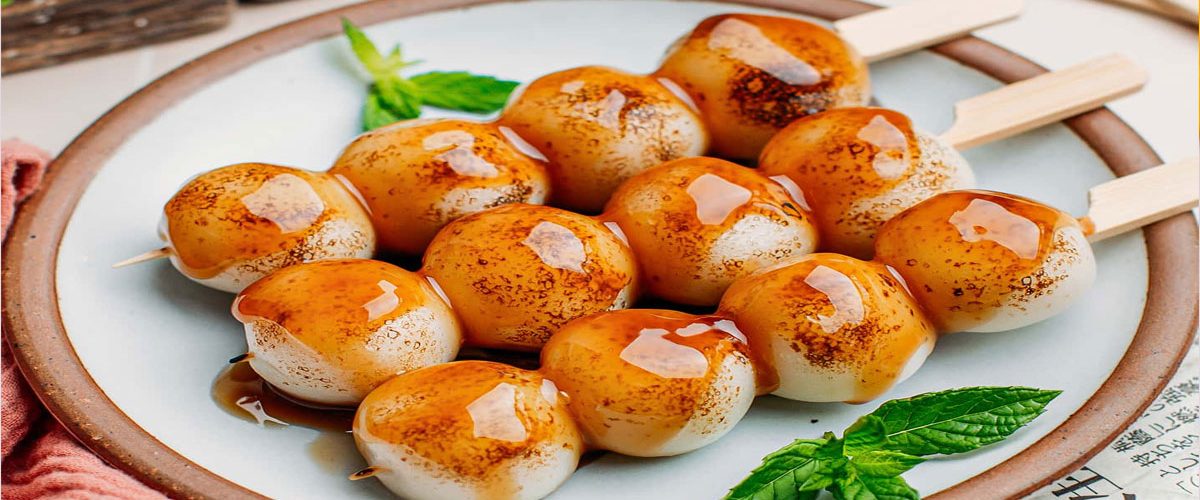Dango Recipe – Japanese Special

Dango is a beloved Japanese dessert made from glutinous rice flour, offering a chewy texture and subtle sweetness. Traditionally enjoyed during festivals and tea ceremonies, these rice dumplings are often skewered and served with various toppings or sauces. Popular variations include Mitarashi dango, glazed with a sweet soy sauce, and Anko dango, topped with sweet red bean paste. Whether you’re celebrating Hanami (flower viewing) or simply indulging in a delightful treat, dango brings a taste of Japan to your table.
- Prep Time15 min
- Cook Time10 min
- Total Time25 min
For the Dango:
- 1 cup shiratamako (glutinous rice flour) or mochiko
- ½ cup warm water (adjust as needed)
- 2 tablespoons sugar (optional, for a slightly sweet taste)
For Mitarashi Sauce (Optional Glaze):
- ¼ cup soy sauce
- ¼ cup water
- 2 tablespoons sugar
- 1 teaspoon cornstarch (mixed with 1 tablespoon water for thickening)
Optional Toppings:
- Sweet red bean paste (anko)
- Kinako (roasted soybean flour) + sugar
- Matcha powder + sugar
Prepare the Dango Dough:
In a bowl, mix shiratamako (or mochiko) with warm water gradually, kneading until a soft dough forms.
Divide the dough into 12 equal pieces and roll them into smooth balls.
Cook the Dango:
Bring a pot of water to a boil.
Carefully drop in the dango balls and cook until they float to the surface (about 2-3 minutes).
Transfer the cooked dango to a bowl of cold water to firm up.
Prepare the Mitarashi Sauce (Optional):
In a small saucepan, mix soy sauce, water, sugar, and cornstarch slurry.
Heat over medium heat, stirring until the sauce thickens.
Assemble and Serve:
Skewer three to four dango balls onto bamboo sticks.
Optional:
Grill or pan-sear the skewers for a light charred flavor.
Drizzle Mitarashi sauce over the dango or serve with anko, kinako, or matcha sugar.
Recipe Notes:
Shiratamako vs. Mochiko: Shiratamako yields a chewier texture, while mochiko produces a softer dango. Choose based on your preferred consistency.
Grilling Dango: For added flavor, lightly grill or pan-sear the cooked dango before serving. This imparts a smoky aroma reminiscent of traditional street vendors.
Storage Tips: Dango is best enjoyed fresh. However, if you have leftovers, store them in an airtight container at room temperature for up to 1 day.
Serving Suggestions: Pair dango with green tea, such as matcha or hojicha, to enhance the authentic Japanese experience.
Alternative Toppings: Experiment with kinako (roasted soybean flour) mixed with sugar, or a dusting of matcha powder combined with sugar for varied flavors.







